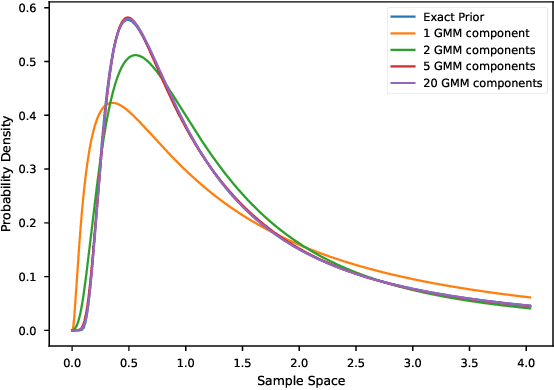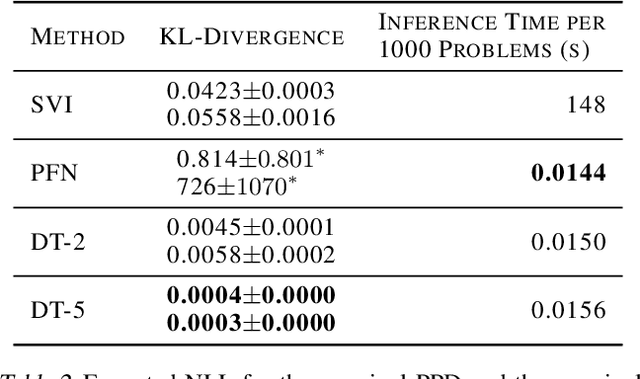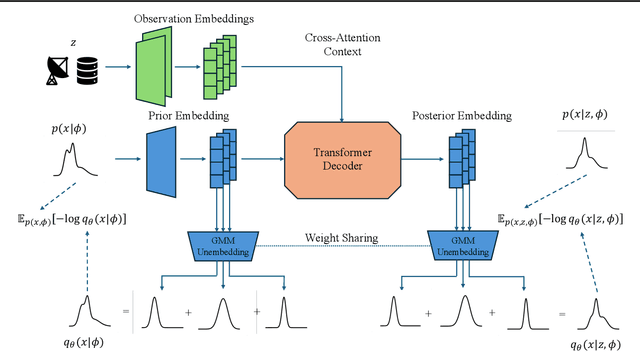Jacob Rawling
Distribution Transformers: Fast Approximate Bayesian Inference With On-The-Fly Prior Adaptation
Feb 04, 2025



Abstract:While Bayesian inference provides a principled framework for reasoning under uncertainty, its widespread adoption is limited by the intractability of exact posterior computation, necessitating the use of approximate inference. However, existing methods are often computationally expensive, or demand costly retraining when priors change, limiting their utility, particularly in sequential inference problems such as real-time sensor fusion. To address these challenges, we introduce the Distribution Transformer -- a novel architecture that can learn arbitrary distribution-to-distribution mappings. Our method can be trained to map a prior to the corresponding posterior, conditioned on some dataset -- thus performing approximate Bayesian inference. Our novel architecture represents a prior distribution as a (universally-approximating) Gaussian Mixture Model (GMM), and transforms it into a GMM representation of the posterior. The components of the GMM attend to each other via self-attention, and to the datapoints via cross-attention. We demonstrate that Distribution Transformers both maintain flexibility to vary the prior, and significantly reduces computation times-from minutes to milliseconds-while achieving log-likelihood performance on par with or superior to existing approximate inference methods across tasks such as sequential inference, quantum system parameter inference, and Gaussian Process predictive posterior inference with hyperpriors.
Fully autonomous tuning of a spin qubit
Feb 06, 2024



Abstract:Spanning over two decades, the study of qubits in semiconductors for quantum computing has yielded significant breakthroughs. However, the development of large-scale semiconductor quantum circuits is still limited by challenges in efficiently tuning and operating these circuits. Identifying optimal operating conditions for these qubits is complex, involving the exploration of vast parameter spaces. This presents a real 'needle in the haystack' problem, which, until now, has resisted complete automation due to device variability and fabrication imperfections. In this study, we present the first fully autonomous tuning of a semiconductor qubit, from a grounded device to Rabi oscillations, a clear indication of successful qubit operation. We demonstrate this automation, achieved without human intervention, in a Ge/Si core/shell nanowire device. Our approach integrates deep learning, Bayesian optimization, and computer vision techniques. We expect this automation algorithm to apply to a wide range of semiconductor qubit devices, allowing for statistical studies of qubit quality metrics. As a demonstration of the potential of full automation, we characterise how the Rabi frequency and g-factor depend on barrier gate voltages for one of the qubits found by the algorithm. Twenty years after the initial demonstrations of spin qubit operation, this significant advancement is poised to finally catalyze the operation of large, previously unexplored quantum circuits.
 Add to Chrome
Add to Chrome Add to Firefox
Add to Firefox Add to Edge
Add to Edge